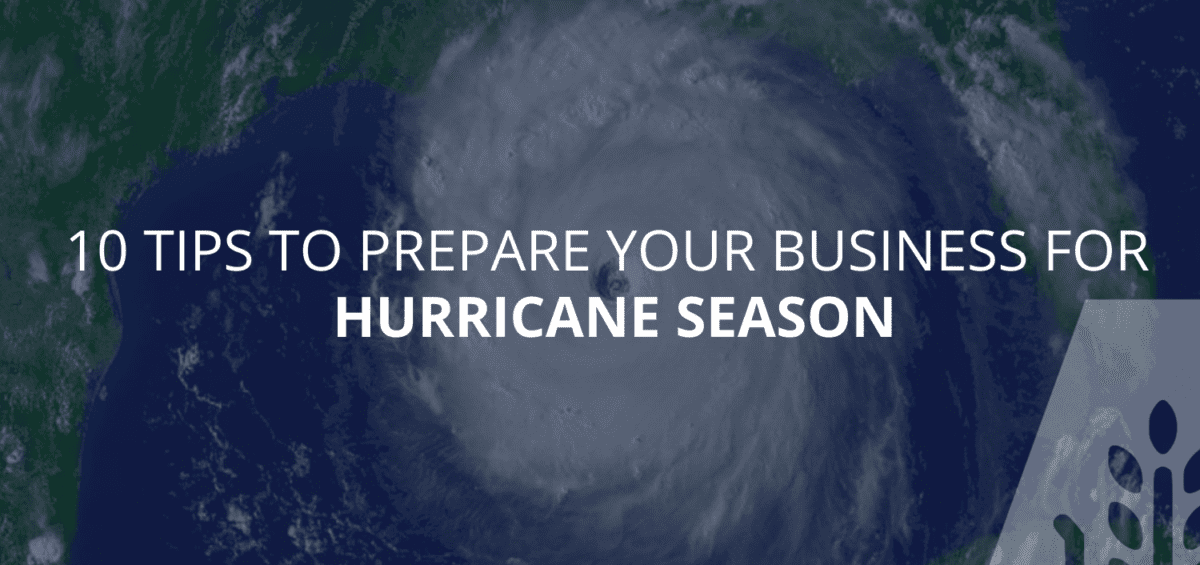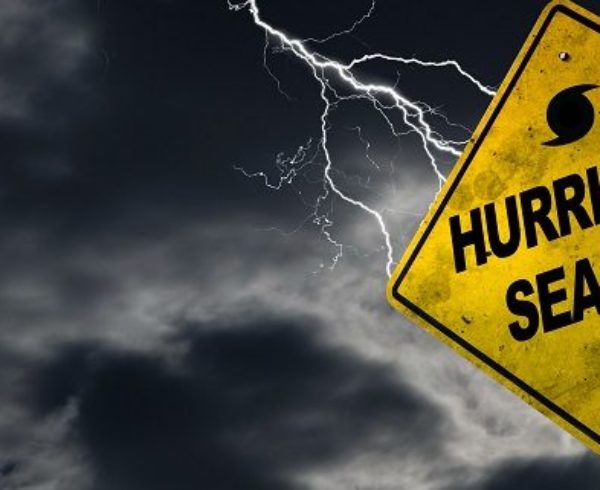1. PREPARE A PLAN AND PRACTICE IT!
Plan, prepare and practice. This is the foundation of business continuity and the only effective way to diffuse the impact of a hurricane. Although today’s technology allows advanced warning of approaching storms, there is little that can be done to continue business operations if no contingency plan is in place. I’m not just speaking of knowing the hurricane routes out of town, but planning an overall strategy that extends to all parts of your business.
You should consider identification of critical mission applications, selection of essential backup data (don’t forget those PCs and LANS!), storage of data offsite, relocation/placement of end users, remote equipment and access to that equipment (networking), and identification of key personnel and beyond (in case these employees are unavailable). These are fundamental planning elements that cannot be accomplished when you are under the gun of an impending hurricane. They should be addressed long before. And remember PRACTICE makes PERFECT! No plan is effective, if it is not practiced and properly executed. Organize a planning team of key individuals within your business. Test your plan. Educate your team through training, drills, recovery testing and mock disasters. Your plan is only effective if it can be properly executed. Consultants are available to assist in this effort should the basic skills not exist in your company. Always remember to plan, prepare, and practice!
2. BACKUP YOUR DATA
To remain competitive in today’s business society, businesses depend on information technology. The technology centers around software, hardware, and data. Without access to data, business quickly comes to a screeching halt.
Work with your IT team or professional to ensure that backups are performed in a timely manner and that they are stored in a facility that is safe, secure, dependable.
If you utilize a recovery services vendor, store your data near this provider. If your recovery window is extremely short, you may want to consider utilizing electronic vaulting technology. This will allow data to be transferred to an alternate recovery site in a matter of minutes. These measures will ensure that your data is where you need it to be in a recovery.
Since there is advance warning when a hurricane approaches, it is important to transport your data quickly and at the first sign of trouble.
Air and freight transportation may likely be discontinued when a hurricane approaches, so it is important that you ship your data to an alternate recovery site or secured facility as quickly as possible. Utilize the warning period. Hurricanes are the only event that gives you the opportunity to do this before the disaster strikes.
3. PROTECT YOUR SITE
Protecting your site facilities and equipment is instrumental in continuing or restoring operations in the event of a hurricane. Ways to do this include Uninterruptible Power Supply (batteries and generators), backup water source and a supply of gasoline powered pumps to keep the lower levels of the facility clear of flood waters.
Boarding up of windows and other vulnerable apertures can protect a building from high-speed flying debris which has been known to severely damage structures in a severe hurricane. Mitigation should also be a consideration.
Constructing facilities away from flood plains and fault zones could eliminate or minimize flooding possibilities. If facility shutdown must occur, work with your team to establish shutdown procedures and ensure that they are part of your overall recovery plan. Don’t forget to include post procedures (start-up) to facilitate re-occupation of the site after the storm has moved on.
4. OPERATE REMOTELY
Inability to access your facility is a highly probable occurrence when a hurricane approaches. Roads may be flooded or closed by authorities. Employees may be unable to leave their homes in a state of emergency or may be unwilling to leave their families. It is very important to plan for this scenario in which your business facility is operational but the employees are unable or unwilling to get there. One way to prepare for this contingency is to develop a method to operate the critical components of your business remotely. Modern technology will allow a laptop computer to function almost anywhere and software exists that will permit that laptop to emulate a system console. In addition, most business functions of end users can be replicated on a laptop from the employees’ homes if the event is anticipated, planned for and tested in advance. If employees must travel away from their homes to a remote location, address finances EARLY. Have a procedure for cash advance for travelers. Consider pre-blocking hotel rooms and opening airline/carrier service expense accounts. Establish these relationships in advance of an approaching hurricane.
5. ESTABLISH AN ON-SITE SUPPORT PLAN
Another way to address the problem of access is to prepare a specially selected team of employees to “camp out” at the processing facility. This plan would necessarily include the provisioning of food and water supplies, the acquisition of sleeping facilities (folding cots or sleeping bags are a few choices that work), the availability of bathing facilities and amenities (such as razors, shaving cream, toothpaste, soap, blow dryers, etc.) and spare clothes for all employees. Some employers may even choose to provide support for employees’ families while the employee is engaged in business continuity activities. Employers can provide transportation, daycare, and lodging to families. Companies may also temporarily relocate them to areas outside the strike area of the storm. Employers may even engage outside contractors to look after the employees’ homes and repair damage so the employee is not distracted by these concerns.
Emergency loans, disaster assistance funds, and other financial assistance should be considered for your support personnel. Most importantly, BE FLEXIBLE! Employee support is instrumental to business success. If you provide support to your employees, they will be able to provide support to you and the business.
6. SECURE A RECOVERY SERVICES PROVIDER
There are two generally accepted methods of planning to recover and resume business processing at an alternate location. One involves the use of another computer site within the company’s enterprise. While this is generally accepted, it does cause impacts to the other site. Capacity, as well as other concerns contribute to these impacts. Computer power, network lines, end user workstations or simply desks, chairs or phone needs are increased in this scenario. Facilities also may be a constraint.
The second alternate site method is to subscribe with a business recovery service to provide those resources required at the time of disaster. The advantage of this approach is that it can be tested and refined to a level that assures that it will indeed work when needed. These vendors can also provide other vital services such as day-to day office operations, printing, check processing, and mail handling in the event you cannot. Some providers, such as IBM, even offer business resumption services which include relocation, construction, emergency repairs, workplace assessment, legal assistance. If your facility has structural damage, these services could speed recovery, reduce your risk, and give you peace of mind. Occasionally, insurance companies offer discounts on premiums to businesses that subscribe to these services. The key advantage of securing a recovery services vendor is that you can continue doing business seamlessly with the assurance that customer confidence is maintained.
7. DECLARE EARLY
During Hurricane Andrew, many businesses waited to act. This decision proved costly and contributed to the billions of dollars in costs associated with the hurricane. Fortunately, they learned from this experience. I was pleased to see that during Hurricane Erin, businesses declared emergency status well in advance, activating recovery plans, vendors, and action teams quickly. Don’t worry or wait. It is important that you do not hesitate to act.
If you subscribe for services through a recovery services vendor, most providers operate on a first- come, first-served basis. They time stamp all “disaster declarations” and assign customer facilities in the order in which they are received. Rather than wait too long and risk being placed in a facility other than the one you are accustomed to (or being denied service all together), it is better to contact your service provider very early on and get yourself at the top of the list. Don’t allow declaration fees (if your provider charges them), to inhibit your decision. If this does cause you to delay action, you should consider another service provider. Either way, it may be well worth the fee if other subscribers also declare and exhaust your service provider’s resources.
8. OUTSOURCE YOUR RECOVERY
Many customers have “outsourced” the process of recovering their business to the staff of their alternate recovery center. Many business recovery services providers now offer this service. Essentially, the subscribers systems, applications and network are restored and recovered at the alternate site. In addition, production processing can also be run by the skilled professionals of the vendor. Many companies use this approach as a hedge against not being able to get their staff to the recovery center. Some even monitor the actual recovery and production processing remotely, assuring that things are going according to plan. When combined with storing the data near the recovery site, declaring early can virtually eliminate the business impact.
9. IMPLEMENT AN EFFECTIVE COMMUNICATIONS STRATEGY
Communications are important to any business entity. In the event of a pending hurricane, it becomes even more crucial. Communications are needed to coordinate emergency activities, to implement the recovery/contingency plan, to warn employees of impending danger, to inform families and off-duty personnel about what’s happening, to maintain contact with customers and suppliers, as well as proactively maintain an information line with the media.
You should keep in mind the normal everyday functions performed by your facility and consider all types of communications, especially voice and data. Be cognizant of the impact if communications were inoperable and establish procedures and action plans to accommodate this occurrence. Communicate with your communications vendors on options and alternatives.
Establish backup communications and ensure that a procedure for restoring communication services is in place.
Some communications options include cellular phones, radios, point-to-point private lines, walkie- talkies (check those toy boxes at home), high-frequency radio, and satellite communications.
Radio and television stations are excellent community resources in the event of a hurricane. Identify a communications contact within your company to maintain a relationship with key stations. They can communicate important information to your team, customers, and vendors, as well as report business impact status
Be proactive when communicating with the media. Manage information in and out. It can be the difference between a negative story and a positive one…
10. EXPECT THE UNEXPECTED
Murphy’s law does apply to hurricanes. Remain flexible and adaptable. You should also remember that the nature of the hurricane will influence your recovery direction. The impact of senior management, customer, and employee decisions (or personal impacts) may also alter your plans. Try not to make assumptions and do not hesitate to act. The best defense against the unexpected is the “P” cubed principle…Prepare, Plan, and Practice (reference number one). Continuously update your plans after each practice or recovery activity and capture any lessons learned. This helps to keep Murphy in check…
As you can see, business continuity before, during, and after a hurricane takes preparation. While a hurricane does provide some advance warning, this warning does not provide enough time to adequately prepare for continued business continuity. What is required is a serious, thoughtful and committed approach to the challenge of recovering your business, whether your company is in a hurricane risk area or not.
Make hurricane preparedness your business…BEFORE THE WIND BLOWS!
Author’s Note: The approaches suggested in this article are recommendations. There are no reporting requirements, nor will following these principles ensure compliance with any federal, state, or local codes or regulations that may apply to your facility. If followed correctly, they will heighten your businesses continued success if a hurricane occurs.












